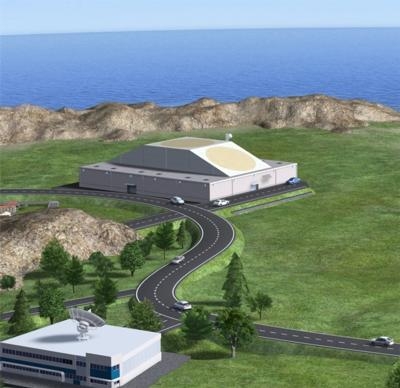Thu, Sep 13, 2012
System To Be Designed For Early Detection Of Space Debris
The European Space Agency (ESA) is developing a new radar as part of the Agency’s Space Situational Awareness program. The radar will test future debris monitoring techniques, helping European satellite operators avoid space hazards and increase safety in Earth orbit. ESA and France’s ONERA – Office National d’Etudes et Recherches Aérospatiales – research center have signed a $5.1 million contract that will see the French organization and five industrial partners in France, Spain and Switzerland design a test surveillance radar and develop a demonstrator model. Work begins this month.

“The agreement significantly increases European industrial competitiveness and capabilities in this field,” says Nicolas Bobrinsky, Head of ESA’s Space Situational Awareness (SSA) Preparatory Program. Early debris detection is crucial to help warn satellite operators of collision risks and enable avoidance maneuvers to be made. The radar will make use of ‘bistatic’ technology, following an earlier, parallel contract between ESA and Spain's Indra Espacio SA to develop a test radar that uses the ‘monostatic’ approach.
“Both radar designs will help test and validate techniques for observing orbital debris by conducting comparative testing,” says Gian Maria Pinna, Ground Segment Manager in ESA’s SSA office. “The two radar demonstrators will be part of an initial complex network of sensors, which will also make use of optical telescopes and data processing centers for observation of debris objects in all orbital regions. While radar technology works most efficiently for the detection of objects in low and highly elliptical orbits, optical technology is better for objects in medium and geostationary orbits.”
In a monostatic radar, the emitter and the receiver are at the same spot and the energy is emitted in discrete pulses. In a bistatic radar, the emitter and receiver are set up at separate locations and the energy is emitted continuously. For the new test radar, the emitter will be located at a former airport near Crucey-Villages, about 100 km west of Paris, while the receiver will be near Palaiseau, to the south of Paris.
The new contract highlights the strong support to European industry provided through ESA’s SSA activities, which began in 2009. “For the development of radar technology alone, the new contract brings the total number of contractors involved to eight, spread across four Member States,” says Nicolas. “This represents a significant return on investment and highlights the abilities of European industry to play an active and autonomous role in developing essential SST assets to help secure safe use of space.”
(Artist's concept of ESA space debris radar provided by ESA)
More News
Aviation Governance Secured...At Least For a While The National Business Aviation Association similarly applauded the passage of the FAA's recent reauthorization, contentedly recou>[...]
Emphasis On Growing The Future of Aviation Through Concentration on 'AFFORDABLE FLYERS' It's been a number of years since the Latest Edition of Jim Campbell's HUGE SportPlane Resou>[...]
Amazilia Aerospace GmbH, Develops Digital Flight Control, Flight Guidance And Vehicle Management Systems Textron eAviation has acquired substantially all the assets of Amazilia Aer>[...]
Honeywell's Primus Brings New Tools and Niceties for Hawker Operators Hawker 4000 business jet operators have a new installation on the table, now that the FAA has granted an STC f>[...]
Company Celebrates Niche-but-Important Advancement in Industry Standards Echodyne has announced full integration of its proprietary 'EchoFlight' radar into the e American Aerospace>[...]
 Bolen Gives Congress a Rare Thumbs-Up
Bolen Gives Congress a Rare Thumbs-Up The SportPlane Resource Guide RETURNS!!!!
The SportPlane Resource Guide RETURNS!!!! Buying Sprees Continue: Textron eAviation Takes On Amazilia Aerospace
Buying Sprees Continue: Textron eAviation Takes On Amazilia Aerospace Hawker 4000 Bizjets Gain Nav System, Data Link STC
Hawker 4000 Bizjets Gain Nav System, Data Link STC Echodyne Gets BVLOS Waiver for AiRanger Aircraft
Echodyne Gets BVLOS Waiver for AiRanger Aircraft



